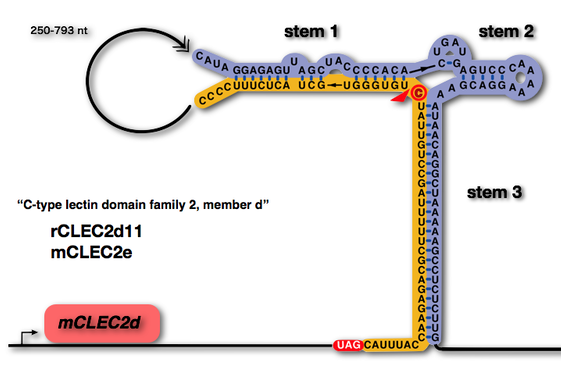

The hammerhead ribozyme was the third ribozyme to be discovered, right after the Group I intron and RNase P. George Bruening discovered this self-cleaving motif in the context of the satellite RNA of tobacco ringspot virus, which replicates via a rolling-circle mechanism. Since then, a number of other small self-cleaving ribozyme motifs have been added to the list of catalytic RNAs, but these were almost always found in association with satellite RNAs of viruses.
We found that there are a set of discontinuous but highly active hammerheads in the 3'-untranslated regions of some mammalian mRNAs. These undergo self-cleavage, which results in preventing the message from being translated. Presumably, these hammerhead ribozymes function as gene-regulating ribo-switches, but we do not yet know what the effector is.
The press release included below, along with the slide-show linked above, gives a good overall description.
You can get a reprint of the paper here.
